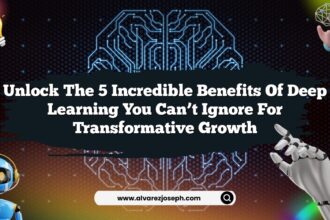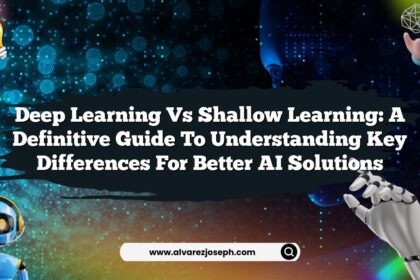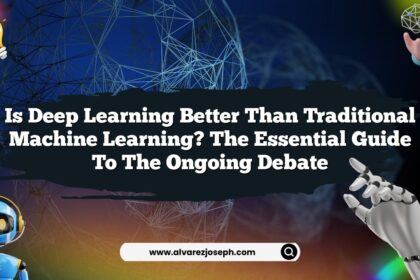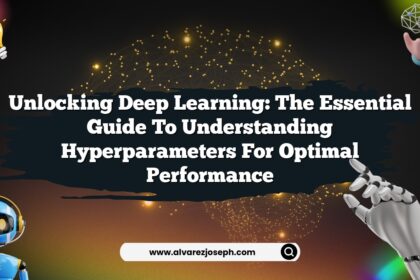Imagine scrolling through your favorite streaming service, and suddenly, it feels like the platform is reading your mind—offering you a perfectly curated selection of movies or music that aligns exactly with your mood. What if I told you that this isn’t magic, but rather the power of deep learning-based recommendation systems working their charm? These systems are revolutionizing user experience across various platforms—enhancing engagement in ways we never thought possible. So, buckle up, because we’re about to dive deep into seven essential recommendation systems that are reshaping the digital landscape and keeping users coming back for more.
Understanding the Power of Recommendation Systems
Recommendation systems are everywhere—from Netflix suggesting your next binge-worthy show to Amazon nudging you toward that gadget you didn’t know you needed. But how do they work? At their core, these systems analyze user behavior and preferences to serve personalized content and product suggestions.
In a world overflowing with options, these recommendations act like a helpful friend—guiding you toward the content you’re most likely to enjoy. The use of deep learning further enhances these systems, making them smarter and more efficient. But this isn’t just about algorithms; it’s about creating an experience that feels tailored just for you. So, what exactly makes these deep learning-based systems so special?
1. Collaborative Filtering: The Buddy System
Imagine you and your friend have similar tastes in movies. If your friend loves a film, you might too. This is the foundation of collaborative filtering, a popular recommendation technique. It works by analyzing the preferences of users and finding patterns across large datasets to recommend items that similar users liked.
How It Works
- User-User Filtering: This method recommends items based on similar users. If you and another user have rated similar items highly, the system suggests items that the other user enjoyed.
- Item-Item Filtering: Instead of focusing on users, this approach looks at connections between items. If you liked “Inception,” the system might suggest “Interstellar,” based on user behavior linking those two films.
While effective, collaborative filtering can suffer from the “cold start problem”—where new users or items lack sufficient data for accurate recommendations. But fear not! More advanced systems tackle these issues head-on.
2. Content-Based Filtering: The Genre Guru
Imagine you love romantic comedies. A content-based filtering system will recommend movies based on their attributes—like the genre, director, or actors. If you’ve watched “Crazy Rich Asians,” it might suggest other films featuring charming romance and a hint of drama.
Key Features
- User Profiles: These systems create profiles based on your past viewing history, rating behaviors, and preferences.
- Item Attributes: They analyze the content features of items, providing recommendations based on similarities in those attributes.
This method works well for users with specific tastes, but it might limit you to a narrow band of recommendations—like eating only one type of cuisine. However, when combined with collaborative filtering, it creates a more robust system that broadens the scope of suggestions.
3. Matrix Factorization: The Secret Sauce
Now, let’s talk about matrix factorization. Think of it as breaking down a complex recipe into simple ingredients. This technique takes user-item interaction matrices and decomposes them into lower-dimensional representations.
Why It Matters
- Latent Features: By uncovering hidden patterns in the data, matrix factorization reveals the latent traits that influence user preferences.
- Scalability: It’s efficient even with massive datasets, making it a favorite among big tech companies.
By capturing the essence of user behavior and item characteristics, matrix factorization offers dynamic recommendations that evolve with changing user preferences. But don’t start yawning yet; there’s more to come!
4. Deep Learning: The Brain Behind Recommendations
Okay, let’s get a bit nerdy here. Enter deep learning—the powerhouse behind many modern recommendation systems. By utilizing neural networks, these systems can understand complex relationships in data.
The Magic Ingredients
- Neural Networks: These models mimic the human brain, processing and learning from vast amounts of user data.
- Non-Linearity: Deep learning models can capture complex patterns that traditional algorithms miss, making recommendations more nuanced and personalized.
Imagine a world where your platform knows you so well that it can suggest content even before you realize you want to watch it. This isn’t just a dream; it’s the reality created by deep learning. But how does this translate into tangible user experience?
5. Hybrid Models: The Best of Both Worlds
Why choose one when you can have it all? Hybrid recommendation systems combine multiple techniques to enhance accuracy and user satisfaction. They leverage the strengths of collaborative filtering, content-based filtering, and deep learning to overcome limitations.
Benefits of Hybrid Models
- Improved Accuracy: By combining different methodologies, hybrid systems provide more reliable recommendations.
- Enhanced User Satisfaction: Users receive more relevant suggestions, enhancing their overall experience.
Imagine your streaming service suggesting a new romantic comedy that’s both a hit among users with similar tastes (collaborative filtering) and matches your favorite actors (content-based). Sounds perfect, right?
6. Context-Aware Recommendations: Reading the Room
Let’s take it up a notch with context-aware recommendation systems. These systems don’t just consider past behavior; they factor in the current context—like location, time of day, or even the user’s device.
Real-Life Applications
- Location-Based Suggestions: Imagine you’re on vacation in Paris, and your travel app recommends nearby restaurants based on your cuisine preferences.
- Temporal Context: If it’s Friday night, your music app might suggest upbeat party playlists instead of mellow tunes.
This adaptability makes recommendations feel timely and relevant, giving users a sense of being understood in their current situation. But what’s next in this fascinating journey?
7. Reinforcement Learning: The Learning Curve
Last but not least, we have reinforcement learning—the intelligent guy in the room. This technique learns from user interactions over time, adjusting its recommendations based on feedback.
Why This Matters
- Dynamic Learning: Unlike static recommendation systems, reinforcement learning continuously adapts to user preferences as they evolve.
- Long-Term Engagement: By considering user satisfaction as a reward, it aims to keep users engaged over time, not just in a single session.
Picture a Netflix system that not only tracks what you watch but also learns from your reactions—skipping, pausing, or rewatching. That’s the power of reinforcement learning, and it could change the game for user engagement.
The Future of Recommendation Systems
As we look ahead, it’s clear that recommendation systems are set to become even more sophisticated. The integration of AI, greater personalization, and the consideration of user emotion and intent will contribute to an unprecedented user experience.
Imagine a world where your favorite platform understands not just what you watch, but why you watch it. The potential is limitless, and we’re only scratching the surface. But this isn’t where the story ends…
Quick Summary
- Collaborative Filtering leverages user similarities for recommendations.
- Content-Based Filtering focuses on item attributes to personalize suggestions.
- Matrix Factorization uncovers hidden patterns in user preferences.
- Deep Learning enhances recommendation accuracy through neural networks.
- Hybrid Models merge various techniques for better results.
- Context-Aware Recommendations adapt to real-time user situations.
- Reinforcement Learning evolves with user interaction to enhance engagement.
- The future of recommendation systems promises greater personalization and user understanding.
- Advanced systems will consider user emotions and intent.
- The journey of user experience through recommendations is just beginning.
Frequently Asked Questions
What is a recommendation system?
A recommendation system is a type of software designed to suggest products, services, or content to users based on their preferences and behavior.
How do recommendation systems use deep learning?
Deep learning enhances recommendation systems by utilizing neural networks to recognize complex patterns in user behavior and item characteristics, leading to more personalized suggestions.
What are the main types of recommendation systems?
The main types include collaborative filtering, content-based filtering, matrix factorization, hybrid systems, context-aware recommendations, and reinforcement learning.
What’s the cold start problem?
The cold start problem occurs when a recommendation system lacks sufficient data about new users or items, making it hard to generate accurate suggestions.
How can businesses improve user engagement using recommendation systems?
By implementing advanced recommendation systems that adapt to user preferences, businesses can enhance the relevance of suggestions, leading to increased user engagement and satisfaction.
Are there any risks associated with recommendation systems?
Yes, potential risks include privacy concerns, echo chambers where users are only exposed to similar viewpoints, and algorithmic bias that may lead to unfair or inaccurate recommendations.
And you, how would you apply this in your life? Let’s continue exploring the fascinating world of recommendation systems together.












